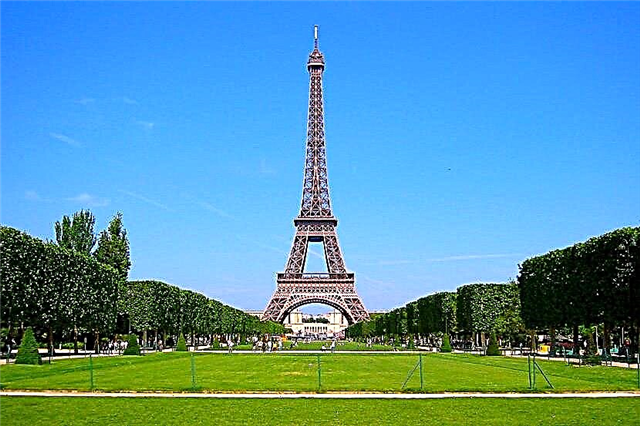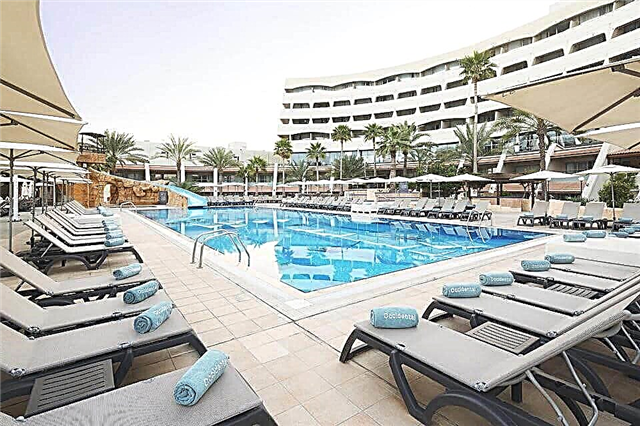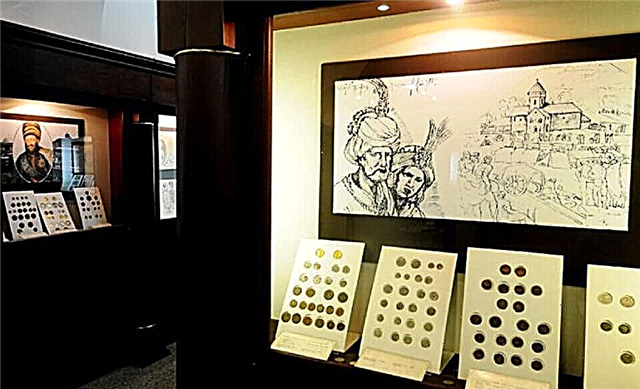Address: France, Paris, Champ de Mars
Start of construction: 1887 year
Completion of construction: 1889 year
Architect: Stefan Sauvestre
Builder: Gustave Eiffel
Tower height: 324 m.
Coordinates: 48 ° 51'29.6 "N 2 ° 17'40.9" E
Content:
Short description
The 100th anniversary of the Great French Revolution of 1789 was approaching. The Paris World Exhibition was timed to this date. Her the main exhibit was a grandiose 300-meter metal tower built by Gustave Eiffel as a symbol of the latest technological achievements.
At that time, the Eiffel had already established himself as a talented engineer, who created the frame for the Statue of Liberty in the USA, the railway station in Hungary, the Iron House in Peru and a number of original bridges.

300 experienced workers erected the Eiffel Tower in record time - in just 2 years. The success was determined by exemplary design calculations and the amazing precision with which the workers manufactured all the parts. The "Iron Lady" was assembled like a child's "designer": first, they built supports, and then they were connected using a platform. The bolt holes are perfectly aligned.
There was no need to drill additional holes either in the supports or in the platform. The assembly of this "designer" took 18,038 metal parts and 2.5 million rivets. Until now, Eiffel's drawings are considered perfect. They are kept in Paris and, if you wish, you can erect an exact copy of the "Iron Lady"... The Eiffel Tower was 2 times the height of the Cheops Pyramid (146.6 m) and for 40 years held the title of the tallest structure in the world, until in 1930 its record was broken by the Chrysler Building in New York.

But, despite its huge dimensions, the tower turned out to be light and graceful, as if woven from lace. The structure itself weighs 10 thousand tons, and the weight of the paint covering it exceeds 57 tons.
The Eiffel Tower - a journey from contempt to admiration
20 years after the end of the exhibition, it was planned to dismantle the tower for scrap, but the era of radio broadcasting began, and thanks to the installation of antennas, the Eiffel's masterpiece was saved. However, the Parisian bohemia reacted with indignation to the audacious project of the engineer. 300 writers, artists and musicians (among them A. Dumas-son, Guy de Maupassant and composer Ch. Gounod) sent an angry letter to the municipality, demanding to remove the "ridiculous tower overlooking Paris." With the light hand of writers, the tower received offensive nicknames such as "clumsy skeleton", "tragic street lamp", "giant chimney", "leaky candelabrum", etc.

Time passed and proved how wrong the "Protestants" were. In just 1 year, Eiffel's masterpiece paid for itself by selling entrance tickets. Eiffel managed to turn his enemies into admirers. Thus, Charles Gounod accepted the offer of the resourceful engineer and, sitting on the upper platform of the tower, performed “Concert in the Clouds”. To do this, a team of workers had to drag the piano to a height of 276 meters. Gounod's concert was discussed in all Parisian newspapers, creating excellent advertising for the tower.
In addition, on the top tier of the tower, Eiffel set up a private office to prove to skeptics the stability of his structure. Today, the Eiffel Tower is of great interest to the guests of the French capital. About 6 million people visit it annually. Elevators, observation decks and restaurants are located on three tiers of the tower. Several years ago, at a height of 124 meters, the "100% French" restaurant Jules Verne opened.

It is very popular for its fine cuisine and exquisite interiors furnished with antique furniture. And in winter, an ice skating rink works on the 1st floor of the tower.
Curiosities and scams associated with the Eiffel Tower
Some people admire the creative genius of the Eiffel, while for others the tower is a kind of challenge "come on, show yourself." So, tailor Franz Reichelt jumped from the 60-meter height of the first level of the Eiffel Tower to test the action of a homemade parachute raincoat... The grief-inventor crashed to death. And the famous swindler Victor Lustig managed to sell the Eiffel Tower twice. It was like this: in 1925, a swindler read in the newspapers that the tower was dilapidated. Lustig sent letters to recyclable buyers and introduced himself as a government agent tasked with selling the tower for scrap.

And the buyer was found. The obnoxious industrialist was ashamed to report to the police, and Lustig sold the same tower again! But the second client reported to the police and the scam was uncovered.











